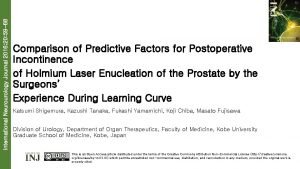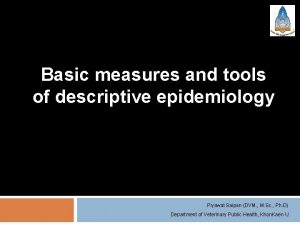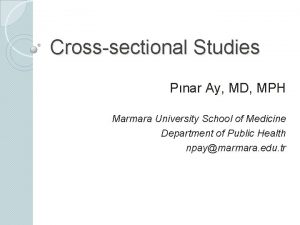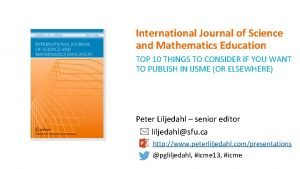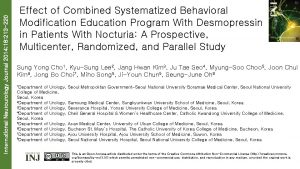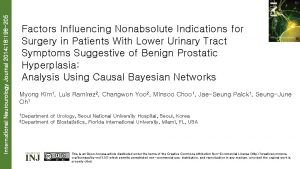International Neurourology Journal 2014 18 31 36 Prevalence








- Slides: 8

International Neurourology Journal 2014; 18: 31 -36 Prevalence, Risk Factors, Quality of Life, and Health-Care Seeking Behaviors of Female Urinary Incontinence: Results From the 4 th Korean National Health and Nutrition Examination Survey VI (2007– 2009) Choon Sig Kwon, Jun Ho Lee 1 Department of Economics and Finance, College of Business Adminstration, Kwandong University, Gangneung; 1 Department of Urology, National Police Hospital, Seoul, Korea This is an Open Access article distributed under the terms of the Creative Commons Attribution Non-Commercial License (http: //creativecommons. org/licenses/by-nc/3. 0/) which permits unrestricted non-commercial use, distribution, and reproduction in any medium, provided the original work is properly cited.

International Neurourology Journal 2014; 18: 31 -36 INTRODUCTION • There is a lack of information on female urinary incontinence (UI) in South Korea. • We investigated the prevalence, risk factors, quality of life (Qo. L), and healthcare-seeking behaviors of women with UI. MATERIALS AND METHODS • We included 9, 873 women over the age of 20 years who had participated in the Korea National Health and Nutrition Examination Survey IV. • The condition of UI was defined as answering “yes” to the question “Do you have UI? ” Additionally, health care seeking behavior for UI was defined as answering “yes” to “Have you ever been treated for UI? ” • The Euro. Qo. L-5 Dimension (EQ-5 D) descriptive system was used to evaluate Qo. L.

International Neurourology Journal 2014; 18: 31 -36 RESULTS • The overall prevalence of UI was 7. 9%. The prevalence of UI significantly increased with age. • The rate of healthcare-seeking behavior for UI also significantly increased with age. However, the rate of healthcare seeking for UI was significantly lower when compared to the prevalence of UI. • In our multivariate analysis, age, body mass index, and marriage were significantly and independently associated with UI. • As the severity of all the subscales of EQ-5 D increased, the unadjusted odds ratio for UI also increased. After adjusting for potential confounders, the subscales of mobility, usual activities, pain/discomfort, and anxiety/depression from the EQ-5 D were significantly associated with UI. CONCLUSIONS • UI is a common disease and is significantly associated with Qo. L. Our results suggest the need for developing preventive measures and treatment policies for UI.

International Neurourology Journal 2014; 18: 31 -36 Table 1. Socio-demographic characteristics

International Neurourology Journal 2014; 18: 31 -36

International Neurourology Journal 2014; 18: 31 -36 Fig. 1. The prevalence of urinary incontinence (UI) and the rate of healthcare-seeking behavior for UI. The prevalence of UI and the rate of healthcare-seeking behavior for UI both increased with age (P trend < 0. 001). However, the rate of healthcare-seeking behavior for UI was significantly lower than the prevalence of UI (P<0. 001).

International Neurourology Journal 2014; 18: 31 -36 Table 2. Factors associated with urinary incontinence

International Neurourology Journal 2014; 18: 31 -36 Table 3. Relationships between incontinence and quality of life assessed by EQ-5 D
 International neurourology journal
International neurourology journal Period prevalence vs point prevalence
Period prevalence vs point prevalence Period prevalence vs point prevalence
Period prevalence vs point prevalence Proportion defination
Proportion defination Period prevalence vs point prevalence
Period prevalence vs point prevalence International journal of science and mathematics education
International journal of science and mathematics education Robert zimmerman imperial
Robert zimmerman imperial International journal of rock mechanics and mining science
International journal of rock mechanics and mining science Calculate prevalence rate
Calculate prevalence rate
